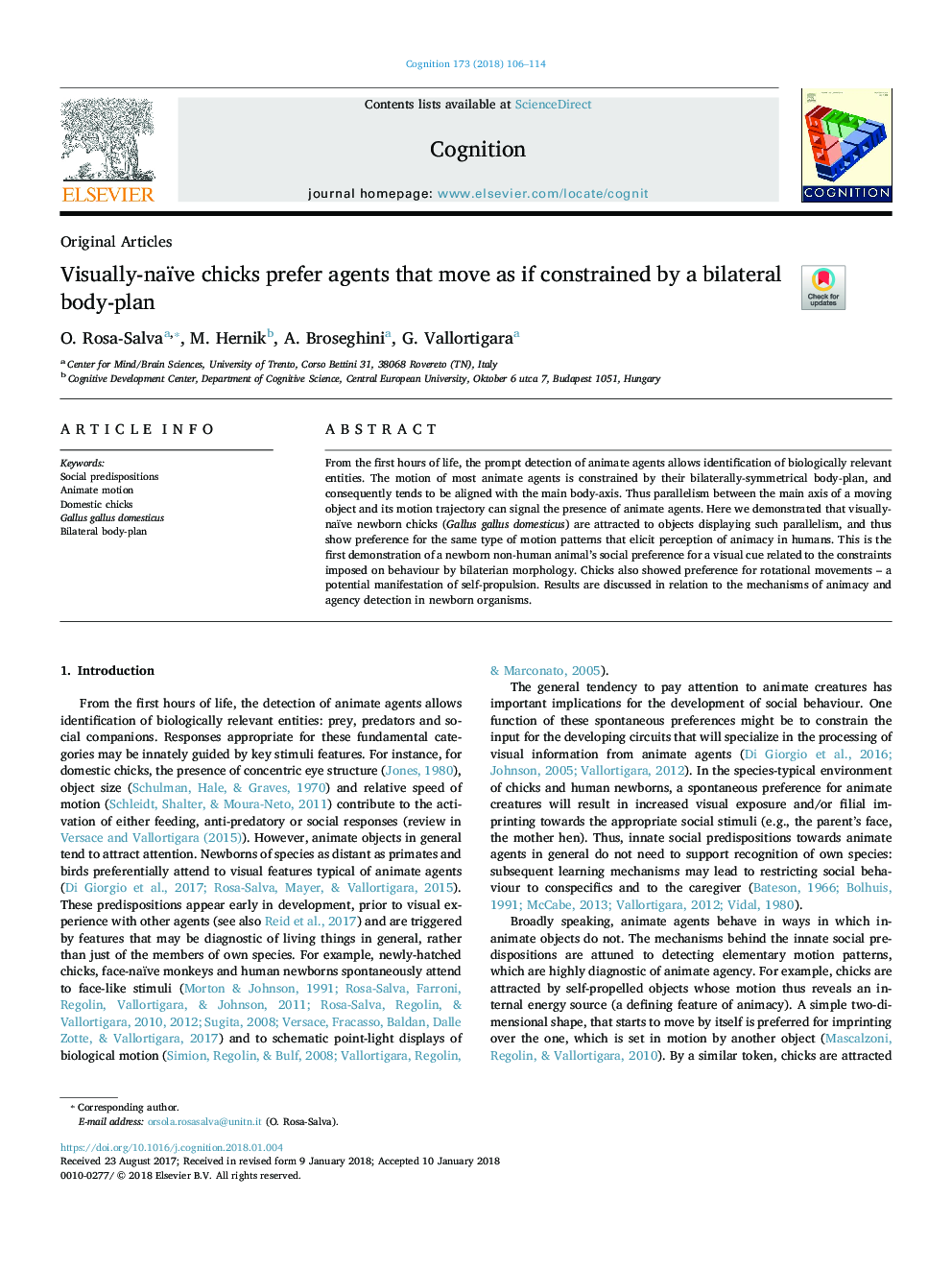| Article ID | Journal | Published Year | Pages | File Type |
|---|---|---|---|---|
| 7285475 | Cognition | 2018 | 9 Pages |
Abstract
From the first hours of life, the prompt detection of animate agents allows identification of biologically relevant entities. The motion of most animate agents is constrained by their bilaterally-symmetrical body-plan, and consequently tends to be aligned with the main body-axis. Thus parallelism between the main axis of a moving object and its motion trajectory can signal the presence of animate agents. Here we demonstrated that visually-naïve newborn chicks (Gallus gallus domesticus) are attracted to objects displaying such parallelism, and thus show preference for the same type of motion patterns that elicit perception of animacy in humans. This is the first demonstration of a newborn non-human animal's social preference for a visual cue related to the constraints imposed on behaviour by bilaterian morphology. Chicks also showed preference for rotational movements - a potential manifestation of self-propulsion. Results are discussed in relation to the mechanisms of animacy and agency detection in newborn organisms.
Related Topics
Life Sciences
Neuroscience
Cognitive Neuroscience
Authors
O. Rosa-Salva, M. Hernik, A. Broseghini, G. Vallortigara,
